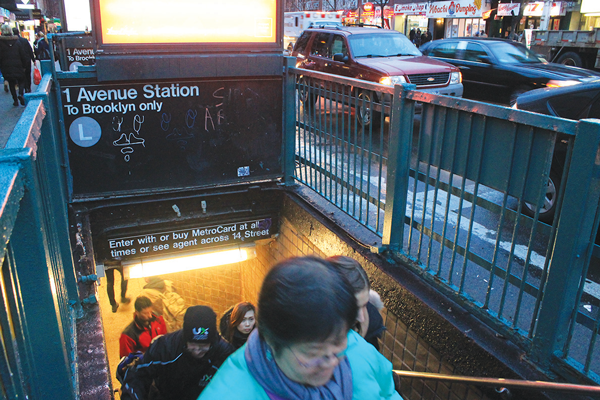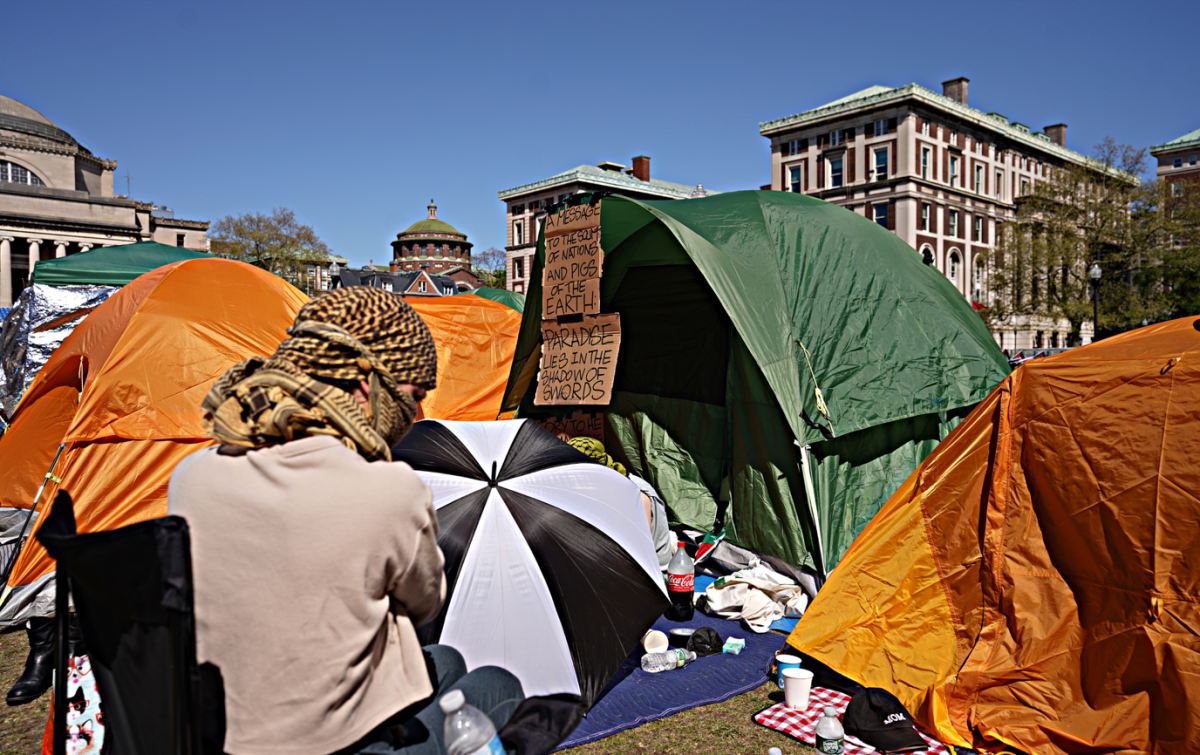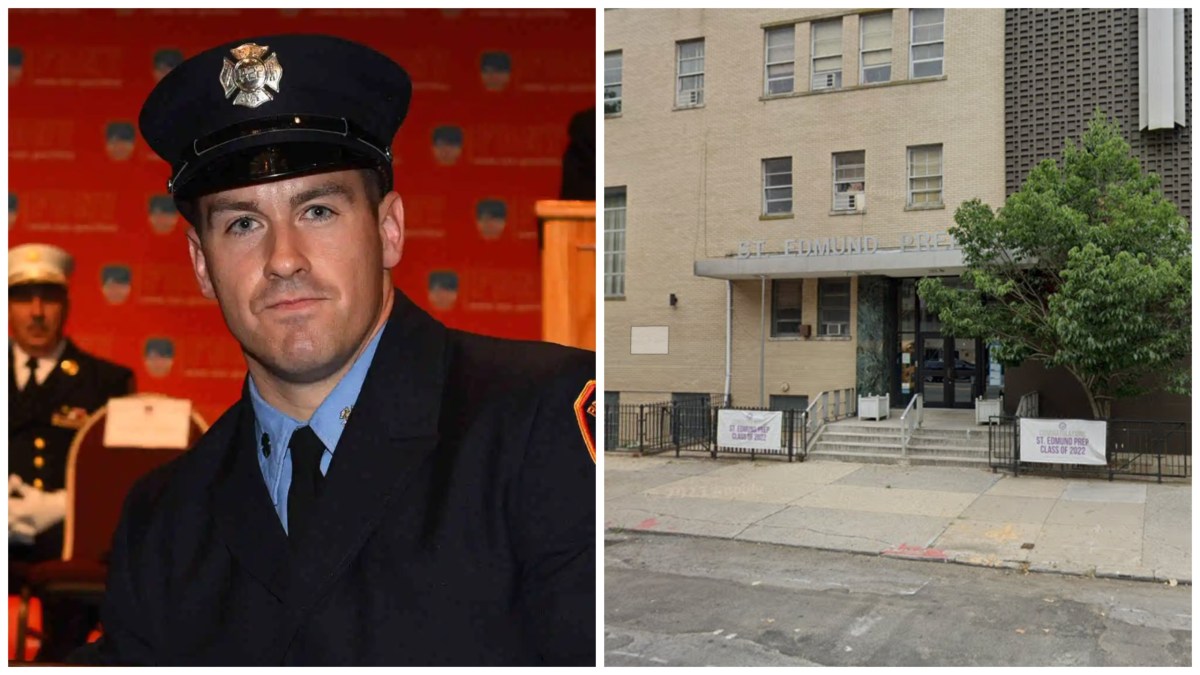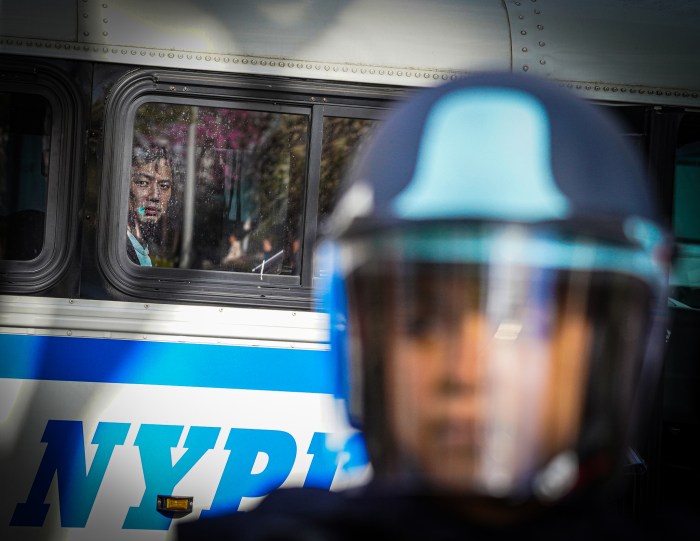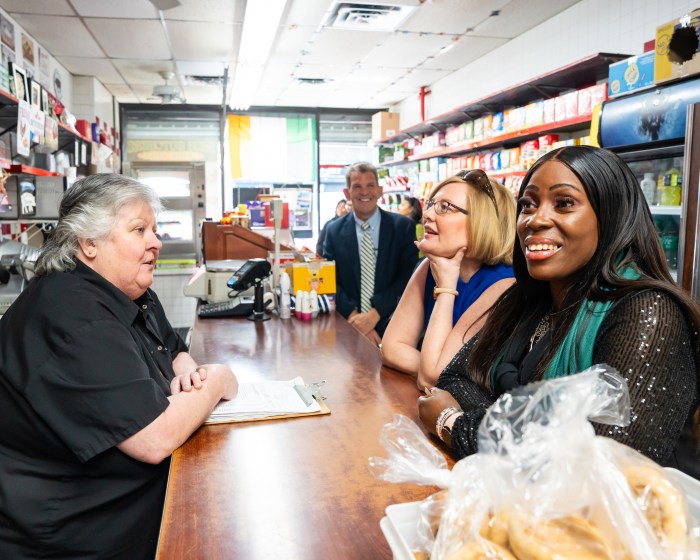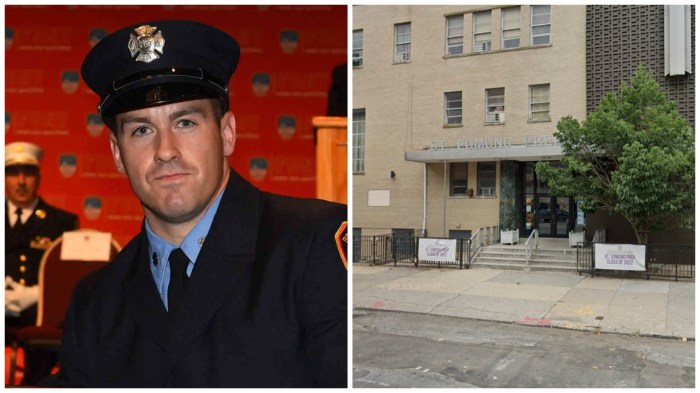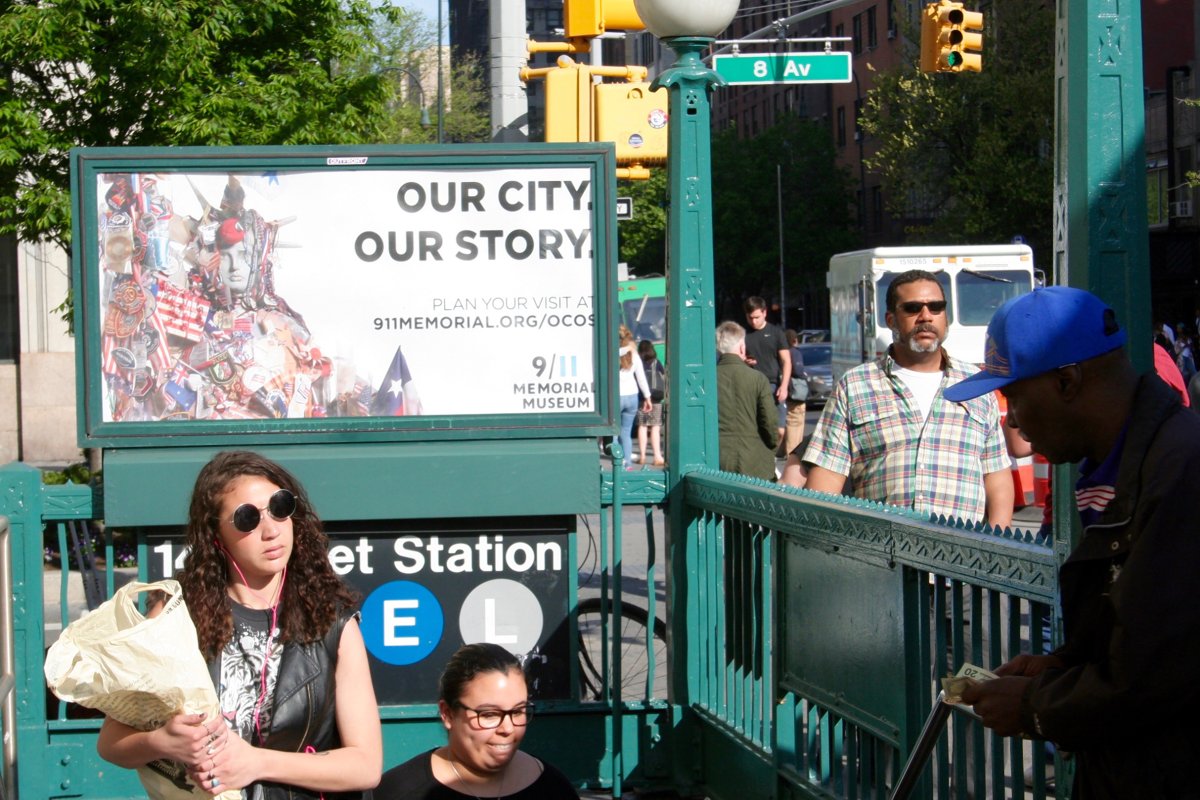
BY DENNIS LYNCH | An ongoing effort from commuter advocacy group Transportation Alternatives to establish a possibly permanent “PeopleWay” — a car- and truck-free thoroughfare on 14th St. during the L train shutdown — received mixed reviews from the public at a Community Board 4 Transportation Planning Committee meeting on Wed., Oct. 19.
Thomas DeVito, TransAlt director of organizing, called the plan extremely preliminary — a “cake not fully baked,” as he put it — and said his group was looking for input from locals. The PeopleWay would make 14th St. a largely high-capacity bus-only roadway with protected bike lines. DeVito and his group said this would be the most efficient way to move people across Manhattan during 2019-20’s 18-month L train closure. But many locals said the group hadn’t thought of where the roughly 16,000 cars and trucks that daily use the major crosstown artery would go.
“Our organization has been extremely upset because we have experienced, when all of these vehicles do get detoured, there is no mitigation possible on any of this,” said Stanley Bulbach, head of the W. 15th St. 100 and 200 Block Association. “The local residential neighborhood does not support this, we make that perfectly clear.”
Bulbach and others also criticized TransAlt for what he said was a misleading pitch, because representatives did not disclose that the PeopleWay plan is meant to be permanent, not a temporary fix during the L train shutdown. DeVito later told this paper that the group does tell that to local stakeholders, but that he mistakenly left it out of his presentation at the committee meeting.
A handful of folks at the meeting supported the plan. Gary Roth, a Columbia University urban planning professor and W. 24th St. resident, said that a rapid bus system and bike lanes were the only ways to move a volume of people on the level that the L train does each day, and that a PeopleWay would naturally attract fewer cars to the area.
“When you take down roadways, people don’t drive in, so there won’t be this flood of traffic,” Roth said. “I think this is the best way to do it. As the High Line helped change how an urban park is conceived, I think a redesigned 14th St. could be a new way to look at a crosstown route in Manhattan, and this could be the template of a crosstown street.”
Harris Steinberg, the executive director of Drexel University’s Lindy Institute for Urban Innovation, called Roth’s take a “rational assumption,” and said that dispersing traffic widely around the area’s grid would alleviate the increased pressure on the streets immediately surrounding 14th St. The key to implementing such a plan was to look at the big picture, Steinberg stressed.
“People will either be encouraged to go on public transportation or they’ll find alternative means to get somewhere,” he explained. “But ultimately, if you want to bend the curve away from vehicle traffic, you have to have these new old ways of moving people around the city. It’s not an inherently bad idea, but you have to look at how it impacts the traffic, pedestrian and bike movement in the city — the total system. It’s about the city as a whole.”
TransAlt members found themselves facing sharp criticism at the meeting, but they’ve garnered support elsewhere. More than 6,000 people signed the group’s petition to local politicians and community board district managers. They also have support from at least 52 businesses both on and off 14th St., and from seven civic organizations listed on their petition page.
The group counts Manhattan Borough President Gale Brewer and state Senator Brad Hoylman on its side. Hoylman and a handful of other municipal, state and federal elected officials successfully campaigned for the Metropolitan Transportation Authority to analyze the impact of closing 14th St. to vehicular traffic and the impacts to surrounding streets in the authority’s pre-shutdown study.
Hoylman said the city shouldn’t shut down 14th St. if the overflow of traffic leaves residents on neighboring streets “unable to access their homes.” Yet, he said, people also had to consider the benefits that a system such as PeopleWay would have for pedestrian and commuters, particularly for seniors and people with disabilities.
“I encourage the germination of these ideas. I think it can only help the eventual outcome,” Hoylman said. “Again, if we do nothing, then we will have ‘L-maggedon.’ That’s not an option. Yes, traffic on the side streets has to be part of this equation. But there are a lot of other factors that have to be considered — seniors, people with disabilities, cycling, express buses, dedicated bikes that are protected, and greater pedestrian access and safety.”
TransAlt did not ask the C.B. 4 Transportation Planning Committee for an endorsement of the plan because of its preliminary nature, and the committee did not weigh in on the discussion.
On Thurs., Nov. 10, at 6:30 p.m. at the Fulton Houses auditorium, at 119 Ninth Ave., between W. 17th and W. 18th Sts., TransAlt will hold a public workshop to hear more input from locals. For more information and other workshop locations around Downtown, visit transalt.org.



